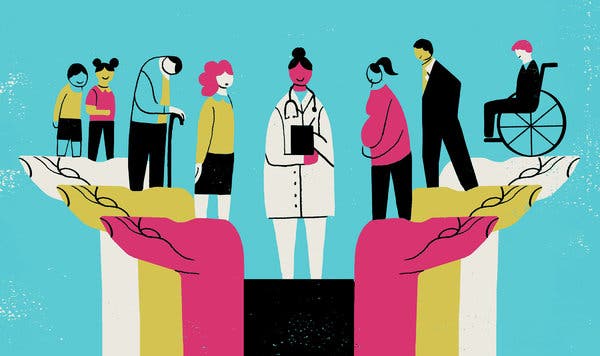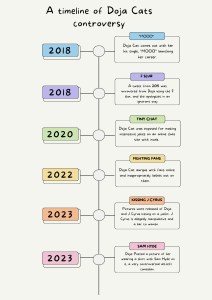Evaluating universal healthcare

May 24, 2021
The United States is the only country of the 33 developed countries without a universal healthcare system. However, the U.S. does have things like Medicare, Medicaid, and the Department of Veterans Affairs that provide healthcare for a specific group of people. With increased talks about introducing a government run healthcare system in America, the pros, cons, and different types of universal healthcare systems should all be examined thoroughly.
To start, let’s answer the question: what really is universal healthcare? A quick google search will provide the definition of “a health care system in which all residents of a particular country or region are assured access to health care.”
This type of system is generally run by the government, and is paid for by the taxes people pay. Various systems have been developed in different countries; most developed European countries, like Germany, Italy, France, and Sweden, have some form of universal healthcare.
All of the advantages and disadvantages are determined by comparison of other countries’ healthcare systems to America’s current system. While America has never had a full-fledged universal healthcare system, we can make reasonable comparisons based on the successes and failures of other developed countries’ healthcare systems.
Different types of healthcare systems
There are three main types of healthcare systems: single-payer, mandatory insurance, and national health insurance.
Countries with universal healthcare plans often mix different systems to help create competition. These mixed options can lower healthcare costs, expand choice, and/or improve the care received. Currently, America offers different types of universal healthcare to specific populations; veterans and military personnel (Department of Veterans Affairs, the Armed Forces), the elderly (Medicare), and low-income people (Medicaid).
Single-payer healthcare: In a single-payer healthcare system, the government provides free healthcare paid for by income-tax revenue. Services, like ambulances and emergency rooms, are government owned and run, and service providers, like nurses and doctors, are government employees. Every citizen has equal access to quality healthcare.
Governments using this system work to ensure doctors and hospitals are providing good healthcare at reasonable costs. These governments collect and analyze healthcare data and prices in order to do this.
The UK developed the single-payer system, originally calling it the Beveridge Model. Spain, New Zealand, and Cuba also operate under the single-payer system. In America, the Department of Veterans Affairs operates under this system to provide healthcare for veterans, and the Military uses this system to provide healthcare for military personnel.
Social health insurance model: Countries that use the social health insurance model require their citizens to buy health insurance. Taxes paid in these countries go into a government run health insurance fund that covers everyone’s healthcare. Services are provided through the private sector, so doctors and hospitals are privately owned. The government has a lot of power to control health insurance prices and to regulate private business prices.
Germany developed this system first. France, Belgium, the Netherlands, Japan, and Switzerland all also operate under this system. The Obamacare system used to be a strict social health insurance model, but as of 2019, it is much looser, and there are many exemptions to its required health insurance plan.
National health insurance: The national health insurance model uses one government-run health insurance plan to pay for all citizens private-practice healthcare. All people have to pay into the healthcare fund, but administrative costs are generally lower because there is only one health insurance plan. The government has a lot of influence in pricing various healthcare costs, especially to force those costs down.
Canada, Taiwan, and South Korea use the national health insurance model. Medicare, Medicaid, and TRICARE systems also use this model here in America.
Advantages
Lowers overall healthcare costs: With universal healthcare, the government has the ability to lower healthcare costs like prescription drug prices. If universal healthcare is implemented, the Department of Health and Human Services would be able to control prices through negotiation and regulation. For example, in Switzerland, the Federal Department of Home Affairs controls all pharmaceutical costs by reassessing drug prices every year and reviewing all costs before they are made available for the public.
Lowers administrative costs: When the current hospital administrative costs in America are compared to countries with universal healthcare’s hospital administrative costs, it’s clear that countries with universal healthcare have lower costs. The United States spends the most on healthcare in the world, but doesn’t have universal coverage. Instead of dealing with multiple private companies, doctors would have to deal with only one agency. For example, American doctors pay four times as much as Canadian doctors dealing with insurance companies.
Provides the same level of care for all incomes: In America, the extremely competitive healthcare market makes insurance companies focus mainly on profit by offering the newest medical advancements for more money. This benefits the wealthy a significant amount more than middle to lower class people because wealthy citizens can afford the newest medical advancements, while most middle class and working class families can’t. With universal healthcare, hospitals have to provide the same high level of care for each citizen because there is only one government-run insurance plan.
Creates a healthier population: In America’s current healthcare system where not everyone has access to preventive care, 46% of emergency room patients used emergency room doctors as their primary care physicians because they had nowhere else to go. This healthcare inequality is a prime factor in why healthcare costs have continued to rise faster than the median income. Universal healthcare that includes preventive care reduces the need for emergency rooms.
Childhood care can prevent future social costs: These costs include crime, welfare dependency, and health issues like obesity. Universal healthcare in other countries often includes comprehensive health education. Health education teaches families to make healthy lifestyle choices, preventing chronic disease and future inability to work.
Infant mortality rates go down: Between 2014 and 2019, America’s infant mortality rate has stayed between 6.2% and 5.9%. In countries that provide universal healthcare, like Germany, Switzerland, and the United Kingdom, the infant mortality rate is almost 3% lower, according to the World Health Organization.
However, there are several disadvantages to a government-run universal healthcare system.
Disadvantages
Longer wait times to receive elective surgery: In a universal healthcare system, the government focuses on providing basic, emergency, and necessary healthcare. For example, Canada has a single-payer healthcare system, but 56.3% of Canadians who sought elective or cosmetic care reported waiting four or more weeks to see a specialist. This is a more extreme case, as the United Kingdom has the same type of healthcare system and only 29.9% of people reported waiting four or more weeks to see a specialist. Both of these countries have significantly higher wait times than America, where the population who sought elective/cosmetic care and waited four or more weeks was only 4.9%. (All statistics provided by the Organization for Economic Cooperation and Development)
Government budget-cuts can limit availability: For example, doctors in America report that Medicare payment cuts would force them to close a large number of in-house blood tests.
The government could limit procedures with low probabilities of success: Drugs for rare conditions and expensive end-of-life care are included in these procedures. In America, end-of-life care alone takes up one fourth of the overall Medicare budget. If a government wanted to reduce spending, these procedures would be the most likely to be cut, potentially limiting healthcare innovation for complex problems. This would mean that the government would review and assess procedures or treatments to determine whether or not they would want to spend money on it. The Swiss government’s Department of Home Affairs does this for all treatments, procedures, and drugs.
A majority of the population pays for the minority’s healthcare: Chronic diseases make up 90% of healthcare costs, according to the CDC. Another Medical Expenditure Panel Survey found that the sickest 5% of the population take up 50% of healthcare spending, while the healthiest 50% take up only 3%.
These statistics are true outside of universal healthcare systems, however, as spending on chronic disease care in the private sector will raise the cost of private health insurance.
Healthcare spending can overwhelm government budgets: In some universal healthcare systems, healthcare spending can take up a higher percentage of the overall budget than it currently does in America. In some Canadian provinces, healthcare spending takes up almost 40% of the budget.
However, it is important to note that an expansion of Medicaid in America would save states millions of dollars, according to health economists Jonathan Gruber and Benjamin Sommers. Last year, they wrote in the New England Journal of Medicine that “Medicaid expansion appears to be a win–win from the states’ perspective…giving health insurance to millions of low-income adults and offering financial support to safety-net hospitals, without any adverse effects on state budgets.”
This is largely because the federal government has promised to subsidize all of Medicaid expansion in the first year of its expansion and almost all of the costs the second year. Thus, state spending on healthcare would be virtually replaced by federal government spending. However, this expansion would likely add to the national debt without increased government revenue.
Proposed plans in the U.S.
One of the first advocates for public healthcare in America was President Harry S. Truman, who advocated for a national health insurance plan as far back as 1948. In 1993, Bill Clinton proposed a universal healthcare plan that would lower Medicare costs, and in 2008, then-Senator Barack Obama outlined a universal healthcare plan that would eventually become the Affordable Care Act after being introduced to Congress.
More recently, in 2019, Senator Bernie Sanders (I-VT) proposed the Medicare For All Act, one of the most talked about bills of the year. Many democratic presidential candidates in the 2020 primaries made expanding healthcare a campaign priority. President Biden campaigned on an optional government-run health insurance plan, but has yet to introduce this plan to Congress.
Talks of healthcare reform, especially expansion of healthcare access, are likely to continue for a long time. Many young progressives in Congress, like Congresswoman Alexandria Ocasio-Cortez (D-NY) and Congressman Malcolm Kenyatta (D-PA) have made universal healthcare a hallmark of their congressional careers. However, there has been opposition, as other young representatives like Madison Cawthorn (R-NC) and Lauren Boebert (R-CO) have made opposition to progressive reforms a hallmark of their careers.
Despite an apparent party-line divide, the Pew Research Center reports that, “63% of U.S. adults say the government has the responsibility to provide health care coverage for all, up from 59% [in 2019].” Popularity of universal healthcare in some form is increasing, and whether or not conservative candidates can hold on to their seats in Congress and their position on healthcare reform is something only time will tell.








